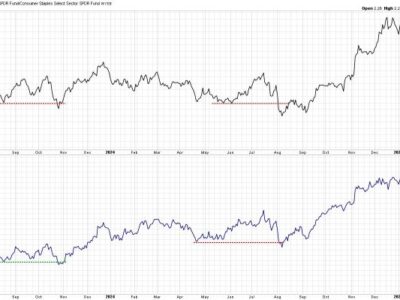
President Biden has received significant criticism from people who want to see more immigration enforcement for supposedly “gutting” Immigration and Customs Enforcement (ICE). While most measures of ICE enforcement remained below pre‐pandemic levels, they also have almost uniformly increased since President Biden took office in January 2021, recovering from significant declines under the Trump administration in 2020.
More Immigrants Deported
Figure 1 shows the monthly number of “removals” (occurring under Title 8 immigration code) and expulsions (occurring under the Title 42 health code before it was rescinded in May 2023). Altogether, the number of removals and expulsions increased from about 9,000 to about 16,000 in September 2022 (the latest month made available). Most reports about ICE removals have not acknowledged the ICE’s Title 42 expulsions, which have replaced many formal “removals” under Title 8 authority, creating a false impression that ICE has been forcing out fewer immigrants overall. Expulsions accounted for a majority of ICE‐forced departures in 2022.
Tom Cartwright of the advocacy group Witness at the Border collects important data on the number of ICE flights by destination, and ICE is conducting more flights than ever. Figure 2 shows the number of ICE flights by type: international removal or expulsion flights with a destination outside the United States, a “lateral” flight along the U.S.-Mexico border to expel someone under Title 42, and other purely domestic flights. These other flights include the first legs of a removal fight as well as transfers to open detention space.
One explanation for why the number of people removed or expelled has not fully recovered to pre‐pandemic levels might be that people expelled following a “lateral flight”—which fly along the U.S.-Mexico border to expel the person to a different Mexican state (at Mexico’s request)—are probably not included in the number of ICE Title 42 expulsions. If these “lateral” flights were included in the removal figures for ICE, there would be no overall decline in removals.
Another explanation could be that ICE is flying to a more diverse set of countries than they were pre‐pandemic. It is easier to fill planes to traditional destinations, and it appears that there were fewer people onboard each ICE flight at least from late‐2020 to the middle of 2021. Title 42 expulsion policies at the border have also meant fewer transfers of Mexicans to ICE custody because they can just be quickly expelled to Mexico. But despite fewer ICE removals, they are still being sent back to Mexico by Customs and Border Protection, which contributes to the slower recovery in ICE removals.
More Immigrants Detained
ICE has also increased the number of people that it is incarcerating in ICE detention facilities since January 2021. From January 2021 to June 2023, the number of people in ICE detention doubled from 15,097 to 30,005. Figure 3 makes clear that Biden reversed the downward trend in ICE detention that started before the pandemic. While it is true that ICE has used detention more judiciously than before the pandemic, when detention was a goal in and of itself, Biden’s ICE has certainly not “gutted” detention either. In reality, it has increased detention use since Biden came into office.
Another measure of enforcement activity is the number of ICE administrative arrests (i.e. people ICE charges as removable from the United States). Monthly ICE arrests have fully recovered in 2022 to their pre‐pandemic monthly rate during the first half of 2020. Border Patrol aided this recovery by releasing people at the border without charging them and telling them to check in with ICE to finish the charging process—most of whom did so.
More Interior Enforcement
The Border Patrol release policy shifted some workload off Border Patrol and onto ICE, but this initiative has now ended, so it is possible that administrative arrests have fallen since the end of the 2022 fiscal year in September. However, ICE also releases monthly statistics on the number of people arrested and booked into ICE detention facilities, which would exclude Border Patrol releases and other arrests not ending in ICE detention. These statistics also show a rise from January 2021.
ICE removals of people who were arrested in the interior of the United States also show a similar pattern. The number of removals declined from about 7,500 in October 2019 to about 2,400 in January 2021 before doubling to about 4,800 by September 2022. If the Biden administration had maintained interior removals at the same level as in January 2021, it would have removed about 14,000 fewer immigrants than it has in reality.
Official ICE enforcement guidelines have undergone several iterations under President Biden. Court rulings have repeatedly forced it to alter its stated policies on prioritizing enforcement of criminals and recent border crossers. Nonetheless, ICE has ended workplace raids, and ICE prosecutors have dismissed tens of thousands of cases against low‐priority immigrants. But despite the claims of critics that immigration enforcement is too low, ICE activity is increasing steadily and in many cases outperforming its capacities at the end of the Trump era.








